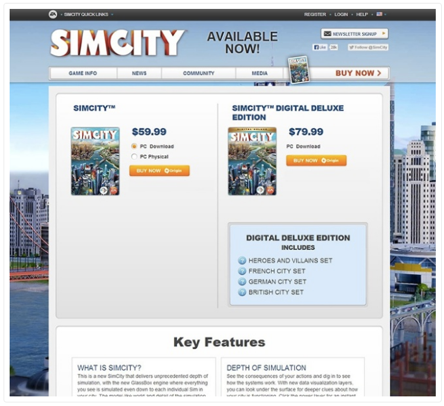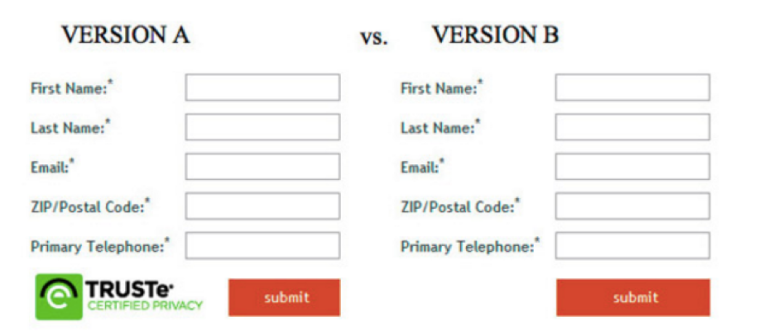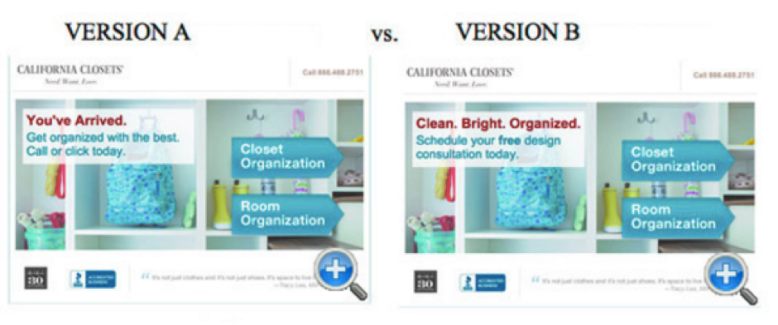There are a number of things about marketing on the web that just instinctually seem right.
“Sales promotions drive sales”
“People are more likely to offer information if they know it’s secure.”
“Clarity of message improves click through rate.”
We’ve relied so much on lessons and the thrill of learning the best practice way that somewhere along the line, we forgot to find out that there is no “best practice way”. No message should be assumed to be the best, and nor should we assume that because it’s the best today it will still be the best tomorrow.
A/B testing allows us to make sure we’re sure. A/B testing is nothing new. It’s simply applying the scientific method to marketing. Given the immediacy of response allowed by digital marketing, it is much easier to conduct cleaner A/B testing in digital formats rather than with physical marketing material. In the physical environment there are an extreme amount of variable factors that affect how your consumer is intaking your message*.
There’s a parable I learnt from one of my lecturers a few years ago –
A heroic marketer came into a retail store and had a look at their numbers. They were spending an excessive amount on catalogues and no one really knew whether the extra sales they generated made up for the heavy creation and distribution costs. So the marketer came in and requested to do some testing.
Fantastic said the owner. He would love to know how well this worked.
Could he possibly halt the catalogues in one geographic segment, maintaining them in another so that he could see the differences in sales in those areas?
God no said the owner. If people don’t get catalogues, sales will drop.
The marketer sighed and left the business owner to remain in his ignorance.
The brilliant thing about A/B testing is that we can test our assumptions and find out whether we really know our audience as much as we think we do.
Assumption: Sales Promotions Drive Sales
 vs.
vs. 
You’d assume that the second example would gain more orders – promotions always do, right? Apparently not. The copy with no pre-order promotion drove 43% more sales.
The moral of this example is that if people are going directly to your site, they may not need any extra incentive to purchase this product. It is extremely important to be aware of whether this is the case because you can actually improve the revenue stream without doing much else…
Assumption: More people will fill out forms if their data security is assured.

Correction: data security verification is most often seen when we fill out forms that require credit cards. When customers see such logos, there is an assumption that they will need to pay for something and therefore consumers choose not to fill out such forms.
When it comes to details such as name/email/post code, consumers are so used to these being offered that there is no such need for privacy reassurances unless you remind them that their information could be stolen.
Assumption: Clarity of Message improves click-through

In the case above, most experts voted version B as the preferred option. The headline was deemed snappier and the subheading gives a better description of the promotion provided. However, the A/B test demonstrated that experts may not know it all. In reality, the copy within Version A tied in much better with the PPC that drove customers to the website, improving leads by 110%.
So what do you think? In your investigations what assumptions have you found to be oddly incorrect?
*This is still the case with digital, but the assumption is that if you have got them to your website, than you can be sure that they wanted to be there to look.
It’s crazy how such subtle changes have such drastic results. There is definitely no one size fits all solution, and the best way to go about it is to adapt to the situation at hand. With digital marketing, and the speed at which the Internet can spread information, this process needs to be done quick and instinctively. Good read Sophie!
– Wei
LikeLike
Thanks Wei! It’s super tricky to get the right mix between doing something correctly and being able to act on instincts but that’s the awesome thing about A/B testing. You can offer an option that goes with your gut and then another. It’s a pretty awesome way of proving that you’re right (if you want to look at it that way :p)
LikeLiked by 1 person
It would be interesting to see what other qualitative testing methodologies are able to suggest the whys in each example.
LikeLike
I’ve always been of the impression that qualitative methodologies were a first-step in the discovery process. In cases such as above, if you were to use qualitative methods, it would very much be the case that consumers would pick the one that they thought they were meant to. That they would over think. And that’s just what we do when we make decisions – by using AB testing you’re getting away from the “I’m think I would do this in the scenario” to “Oh, so people do this, even though they think the opposite”.
LikeLike